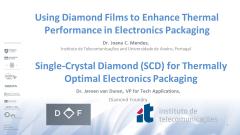What's New in Digital Predistortion
In cellular wireless communications systems, the RF power amplifier (PA) in the transmitter must be as efficient as possible, to minimize energy costs, to prolong battery life, and for ?green? considerations. Modern spectrally-efficient, digitally-modulated signals such as LTE and UMTS present a challenge for efficient RF PA design, and the power amplifier architectures that are adopted to achieve this goal are generally very nonlinear, and so some form of linearization technique is necessary. The increasing use of linearization techniques, and especially the emergence of high speed digital processing as an enabling technology to implement digital pre-distortion (DPD) of the PA input signal, represent an important paradigm shift in PA design. The PA component can now be designed with more emphasis on power and efficiency, without the traditional constraints of meeting stringent linearity specs simultaneously. Understanding the utility of a linearizer to obtain optimum efficiency has thus become a new subject area in modern RF PA design. The system-level design of linearized PA transmitters requires accurate models to achieve the optimal performance. Behavioural modeling is used to describe the PA and linearizer at this level of the design. In this lecture, we shall present some approaches to the behavioral modeling of nonlinear dynamical systems that can be used to model RF PAs; particular emphasis will be given to the treatment of memory effects. Some common mathematical and systematic approaches to model generation will be presented, to obtain accurate but compact nonlinear dynamical models. A brief description of some characterization techniques will be included. These same nonlinear modeling techniques can be applied to the design of successful pre-distortion algorithms. We shall illustrate the overall structure of a linearized transmitter using several DPD architectures, and we shall present various approaches to adaptive pre-distortion, considering such features as convergence, signal bandwidth, accuracy, and cost.
This video is the DML presentation by Dr. James Wood and focuses on digital predistortion for power amplifiers used in modern wireless .
 Cart
Cart Create Account
Create Account Sign In
Sign In





